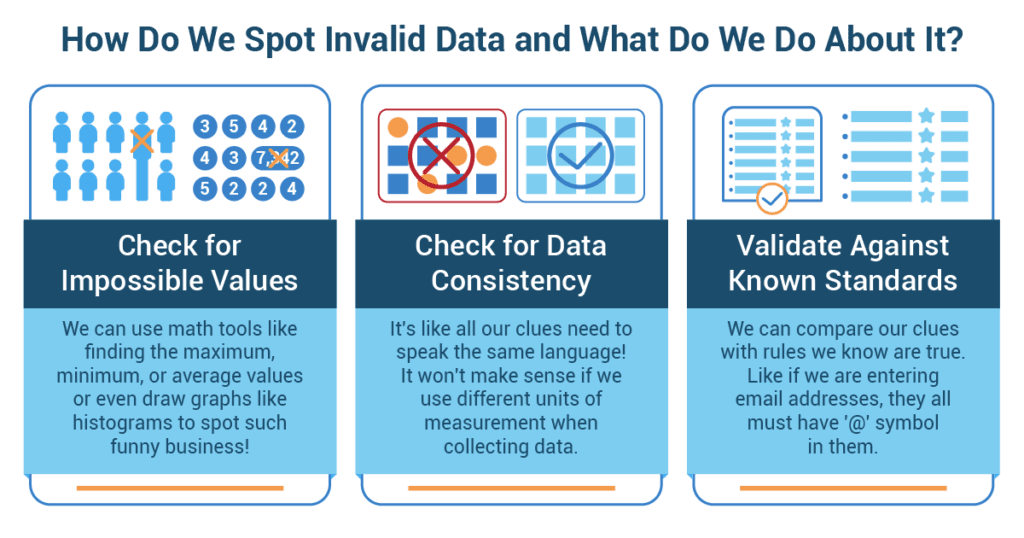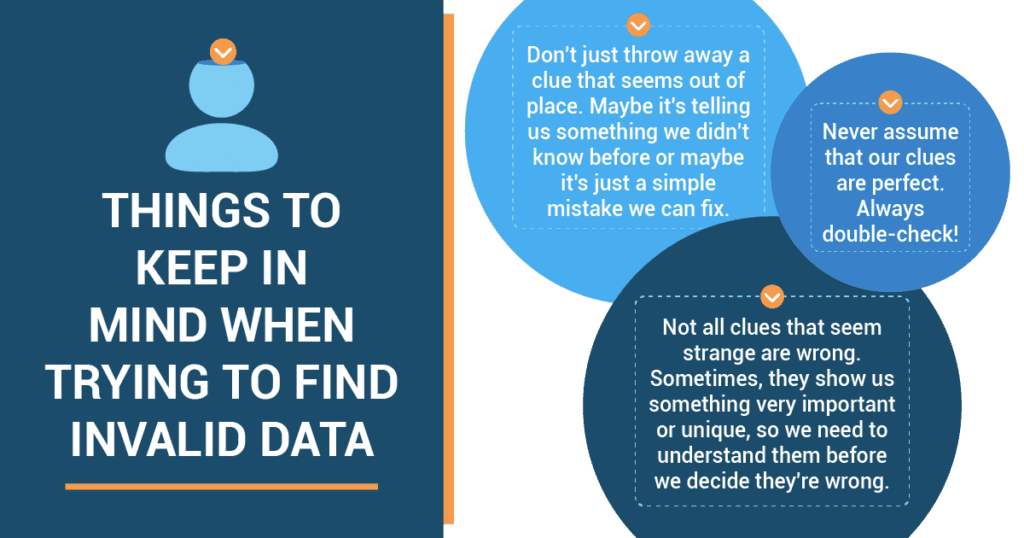Today, I want to take you on a journey, 🚢 a journey that will open your eyes to a critical aspect of our world that might seem a bit technical yet is very much a part of your everyday lives. This journey is about data validity. Now, I know that ‘data validity’ might sound like a term borrowed from a computer science textbook 📖 or a statistician’s manual, but stick with me here.
Have you ever asked a friend for a restaurant recommendation? Now, consider this – what if this friend recently went on a diet and started loving all things green and leafy, 🥦while you, on the other hand, can’t imagine a meal without some juicy, delicious steak? 🥩Is their recommendation valid for you?
Or imagine you’re scrolling through social media and come across a post claiming a particular skincare product to be ‘the best there is.’ Upon reading further, you find out the post is sponsored, and the person posting hasn’t really tried other products. Now, is their claim valid?❓
In both scenarios, you’re confronted with ‘data’ – the restaurant recommendation, the skincare review. But to make an informed decision, you must question the ‘validity’ of this data – its relevance, its authenticity, its impartiality.
The act of exploring data validity is not confined to the realms of science labs or research organizations; it’s in our homes, our conversations, and our daily decisions. Today, I invite you to join me on an exploration of the concept of data validity, its significance, and how it shapes our everyday lives and the world around us. By the end of this article, you’ll not just understand what data validity is, but you’ll also appreciate how vital it is in making decisions, big or small.
What is Data Validity, and Why is It Important?
Let’s play detectives for a while! In our quest to solve the mystery, we collect clues, or “data,” right? But what if someone tricks us with a phony clue that doesn’t make sense? That’s exactly where data validity comes in!
Data validity is like a magic shield that makes sure our clues (or data) are true, dependable, and really helps us solve the problem we are trying to investigate. For instance, if we are trying to find out the average age of our school’s basketball team, we can’t have data saying someone is 200 years old. That’s impossible and, hence, not valid!
Imagine we are making a robot that predicts tomorrow’s weather. We feed it a lot of information about previous weather conditions. But if we feed it garbage like ‘rainbows happened at midnight,’ the robot will get confused. It’s like the saying goes, “garbage in, garbage out.”
So, data validity is super important! If our data isn’t valid, we might end up making the wrong conclusions or building a robot that predicts it’s going to snow in summer!
Identifying Invalid Data
To solve our mystery, we need to check our clues meticulously. Here’s how we can do that:
- Check for impossible values: Just like how there can’t be a unicorn in our backyard, some data values are simply impossible. For example, if we are trying to figure out the average age of our school’s basketball team, it wouldn’t make sense to have data saying someone is 200 years old! That’s impossible and definitely not valid!
- Check for data consistency: It’s like all our clues need to speak the same language! For example, if we are collecting the heights of our classmates, it doesn’t make sense if one height is in inches and another in feet. Or, if we are grouping our classmates by favorite sport, we can’t have ‘pizza’ as a category!
- Validate against known standards: We can compare our clues with rules we know are true. When looking at understanding the heights of our classmates, everyone’s height should be measured in the same unit, like inches or centimeters, to make the comparison fair and consistent. This way, you can draw meaningful conclusions about your classmates.
So, put on your detective hats, grab your magnifying glasses, and let’s step into the exciting world of data validity! It’s time to investigate like real statistical detectives!
Emily’s Digital Quest: Unlocking the Truth in Video Game Data

One sunny afternoon, Emily found herself facing an intriguing challenge for her AP Statistics class. Mrs. Robinson, her statistics teacher, had assigned her class a project: ‘Investigate a real-world topic using statistical methods.’ Emily instantly knew her project would revolve around video games.
With the help of her teacher, Emily crafted a survey to gather data about her classmates’ gaming habits. The survey had a variety of questions, ranging from favorite genres to weekly gaming hours. The results flooded in. Emily was thrilled; she was about to dive into a gold mine of information.
However, Emily knew the first step wasn’t analysis but validating the data she’d collected. She remembered Mrs. Robinson’s lesson about how not all data can be taken at face value. Some data, like a rogue villain in a video game, could be misleading and throw off her whole investigation.
Emily set to work, her eyes scanning the spreadsheet in front of her. She started by checking for impossible values. She found an entry claiming to game for 300 hours a week. Even in a world where time-bending potions were a reality, there are only 168 hours in a week. Clearly, that was an impossible value!
Next, Emily checked for data consistency. She noticed a problem in the column recording favorite genres. Some respondents had listed game titles instead of genres. A quick fix to the data’s format ensured uniformity and made her data more valid.
Lastly, Emily decided to validate her data against known standards. For this, she decided to cross-verify the results of her favorite game, ‘Realm Raiders,’ with known gaming forum statistics. Emily found that the popularity of ‘Realm Raiders’ among her respondents was consistent with its popularity among forum members.
Despite the initial errors, Emily refrained from dismissing the data outright. She understood that outliers could indicate something intriguing and errors could be corrected. She used her statistical sleuthing skills to refine her data and validate it. It was an enlightening experience, revealing to her the importance of careful examination before jumping to conclusions.
At the end of her quest, Emily presented her findings to her class, taking them through her methodical process of ensuring data validity. Not only had Emily unveiled some fascinating insights about her classmates’ gaming preferences, but she’d also demonstrated how to handle data responsibly.
In Emily’s Digital Quest, her greatest victory wasn’t against a virtual boss monster but against invalid data, ensuring that her statistical conclusions were as reliable as they were fascinating.

